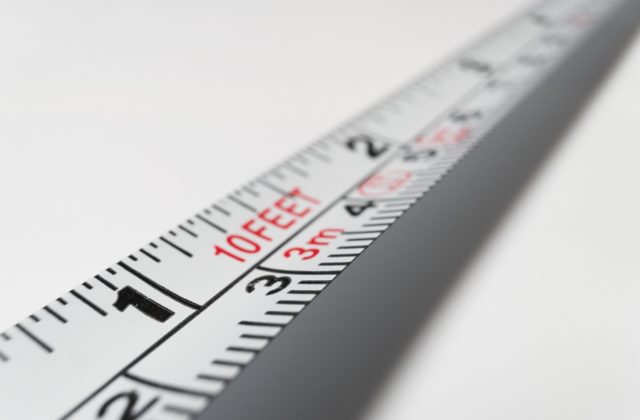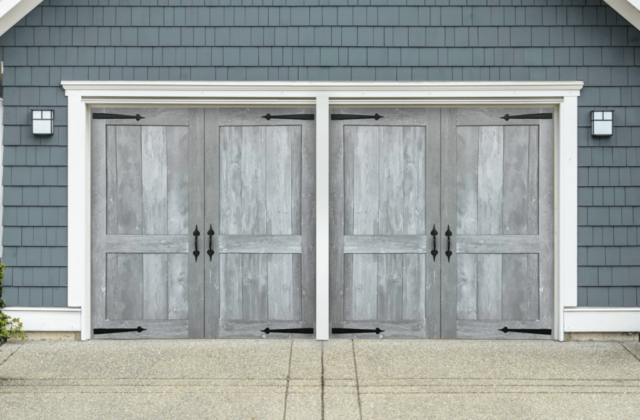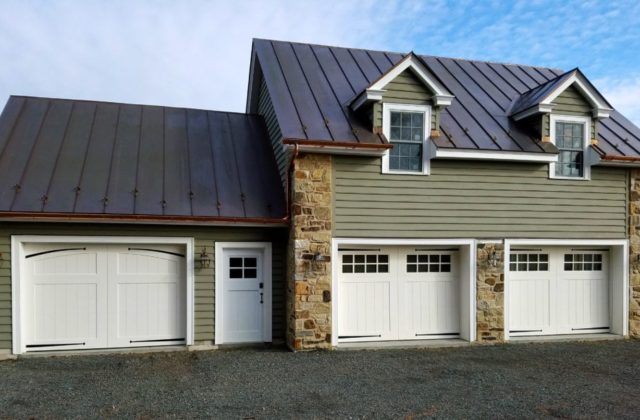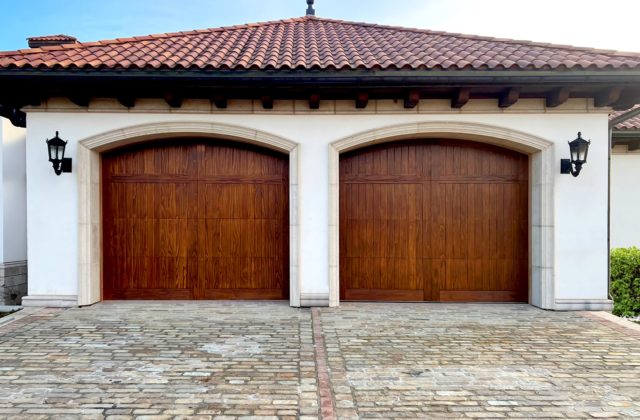Admiring your new carriage-style garage door can be a beautiful thing. But before you arrive at that moment, there are a lot of decisions that need to be made in the process of creating your custom garage door design. Allow us to walk you through the process.
 Start With the Best Materials
Start With the Best Materials
Your custom garage door design should begin by choosing which material your garage door will be constructed from. Wood, vinyl, and composite are amongst the most popular materials in the design of carriage-style garage doors.
Wood: Solid wood doors are crafted from premium woods that include cedar, mahogany, and fir. They are built with an insulated plywood frame.
Vinyl: Vinyl garage doors are constructed with a precision-milled cellular vinyl exterior backed by an insulated, double-sided, steel frame.
Composite: Composite doors feature a faux hardwood composite, usually a urethane material, applied to a double-sided, insulated steel frame.
Select a Door Style
When identifying the different garage door styles, instead of looking at them as overhead doors, imagine them as authentic, carriage-style doors, and think about how they would have operated 100 years ago. Did they swing open? Did they fold open? Or a combination of both?
Common carriage door styles include:
- Swing
- Trifold
- Bifold
- Barn
- Traditional Stile and Rail
From the Top . . .
The next few decisions you make will all be focused on the top section of your garage door design.
Square top or arched?
In most cases, arch top garage doors are actually simulated arches. This means that the door has a square top that is hidden behind an opening with an arch design feature.
However, there are some instances, especially in older homes, where a garage has been built with a true arch top door, which has a curved top and jamb. When your home has a true arch top door, it is not possible to install an overhead opening door track mechanism.
Glass or no glass?
Adding glass to your custom garage door design is a choice that can increase the curb appeal of your garage door. Many homeowners lean towards standard panes of clear glass, but specialty glass, including frosted, glacier, and seeded glass, are also available.
The number of windows (also called lites) you can add to your design, depends on the style of door you chose:
- Swing doors have 2 areas where glass can be added
- Trifold doors have 3 areas where glass can be added
- Bifold doors have 4 areas where glass can be added
- Barn doors usually do not include glass, but when added, it’s typically in a small window
You can also choose between simulated divided lites and true divided lites.
Simulate divided lites are designed with a large pane of glass that covers each window area. Then exterior grilles are added on top of the glass, giving the impression of individual panes.
True divided lites are designed so that EACH lite in the window area is a separate piece of glass with its own exterior frame and interior stop.
. . . to the Bottom
Again, the style of door you choose will determine the number of panels that your custom garage door design will include:
- Swing doors have panels in multiples of two: 2, 4, or 6 panels
- Trifold doors have panels in multiples of three: 3, 6, or 9 panels
- Bifold doors have panels in multiples of four: 4, 8, or 12 panels
- Barn doors are designed like swing or sliding doors with panels in multiples of two.
Panel Options
After selecting a number of panels, now select the kind of panel. Flat and raised panels are simple and straightforward design choice. When you move to a Tongue & Groove (T&G) panel, however, you have options for beaded, V-groove or even square groove detailing. Once you select a T&G option, the orientation of the grooves becomes an additional design feature. Grooves are usually vertical but can be rotated to a 45 degree angle, better known as herringbone, or rotated even farther to become horizontal.
Trim Boards
Once you’ve settled on how many panels your garage door will have, let’s add some detailing to those panels. This detailing is called “trim board” and is available for most of our product lines:
- Cross Bucks (also called X-Bucks)
- V-Bucks
- Z-Bucks (also called A-Bucks)
- Cross Rails
- Sprung Bucks
Most trim boards look best in pairs. On a trifold door, which has 3 panels, a custom design will often include a middle panel that differs from the end panels. Traditional stile and rail doors will also look different because there will always be ‘cross’ rails across the door where the sections will break to roll up.
A Beautiful Finish
Choosing the right stain or paint for your custom garage door design is where you can really make an impact!
Stain: A stain will bring out the natural beauty and color of any wood. Keep in mind that stains are best tried out on a sample before applying to an entire door to ensure you like the final color.
Our EnduraFinish stain, a 5-step polyurethane wood coating system, produces the look and feel of a furniture-quality finish on wood garage doors.
Paint: Paint is a universal finish choice because it can be used on most wood, vinyl, or composite doors. Garage doors are primed and painted using a high quality, exterior grade latex paint. Most manufacturers can color match any paint color you choose. Just keep in mind that darker colors might limit your choice of materials while lighter colors, generally, are available for any material.
Faux Stain Paint: When you want the rich look of a stained wood, paired with a low-maintenance composite garage door, choose a faux stain paint. Faux stains can create finishes that mimic mahogany, oak, walnut, cherry, and driftwood.
Accentuate with Hardware
You’ve taken care to select the best materials, visual details, and perfect finish. But, if you haven’t added any decorative hardware to your garage door design, you might be missing out. Adding decorative hardware to your door can easily improve the curb appeal of your home.
When placing hardware into your garage door design, think about how the hardware would have been used on a functioning, old-style carriage door, where hinge straps and handles would be fully operational.
Some hardware missteps you’ll want to avoid:
- Adding strap hinges to a door that doesn’t look like a swing door (meant to swing open)
- Choosing strap hinges that are too short, too long, or too thin for the door size
- Placing strap hinges where they don’t make sense. Look at a real swing door to see where the hinges are placed and copy the locations.
- Using single handles instead of a pair
- Placing too little hardware on double doors



